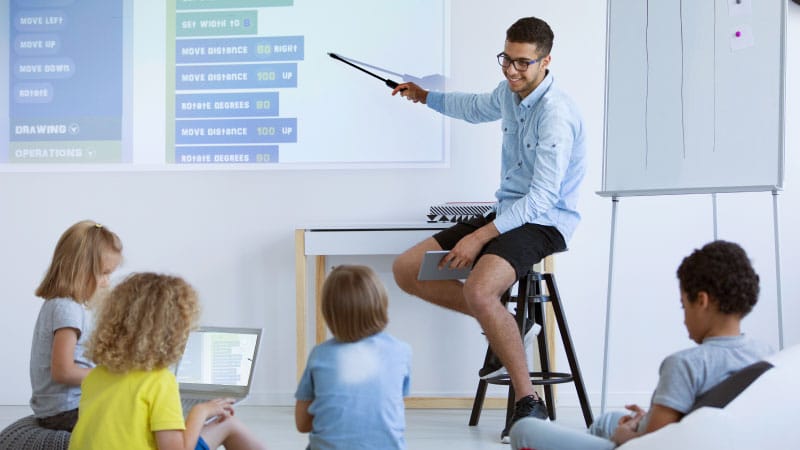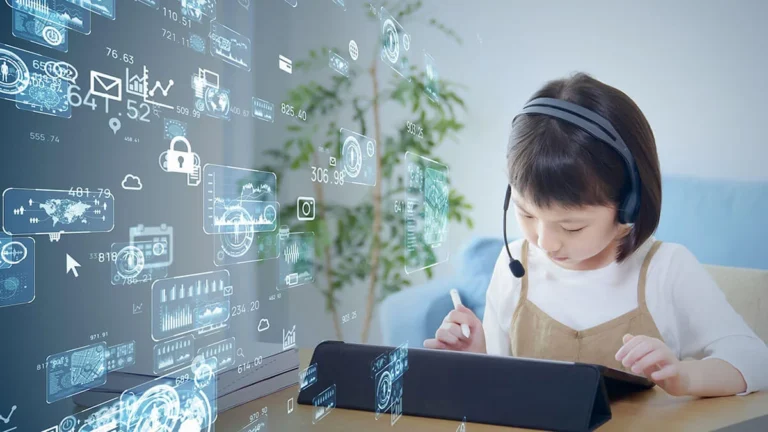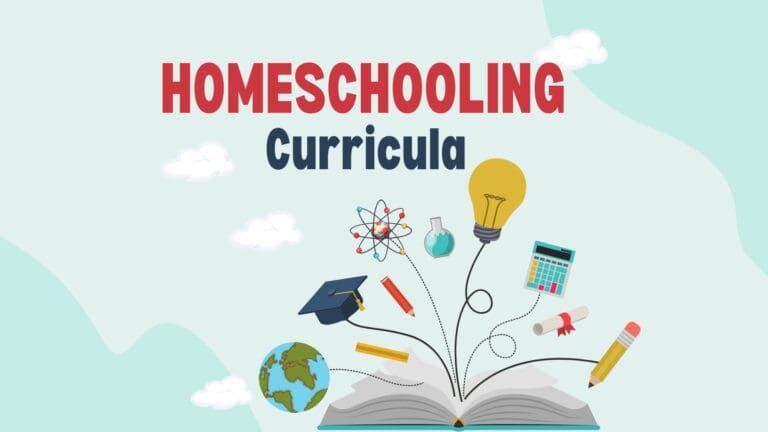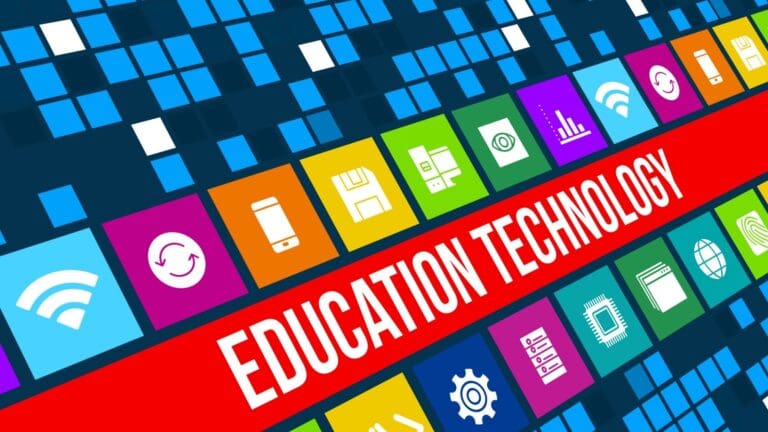Benefits of Technology for Children’s Interactive Learning
Technology has transformed the way we live, work, and learn. Children today are growing up in a digital world, surrounded by technology from an early age. While there has been some concern about the negative impact of technology on children’s development, the benefits of technology for children’s interactive Learning cannot be denied.
Interactive learning online is an effective way to educate children. It engages children in learning, making it more fun and enjoyable. Technology has made interactive learning activities more accessible and engaging for children of all ages.
What is interactive learning activities?
Interactive learning activities refer to educational methods that actively engage students in the learning process through a variety of means.
These activities can take many forms, such as:
- group discussions
- simulations
- games
- case studies
- problem-solving exercises
The key feature of interactive learning activities is that they require students to actively participate in the learning process, rather than passively receiving information from a teacher or textbook. This active engagement allows students to develop critical thinking skills, problem-solving abilities, and a deeper understanding of the subject matter.
Moreover, interactive learning activities can help to promote collaboration, communication, and creativity among students, as they work together to solve problems and complete tasks. With the increasing availability of digital technologies, interactive learning activities can also be delivered through online platforms, enabling students to participate in collaborative learning regardless of their physical location.
What Are The Benefits Of Interactive Learning
- Learning is more engaging.
Children are naturally curious and love to explore. Technology provides platforms that captures kids’ attention and makes learning more engaging. Interactive Learning through technology allows children to learn at their own pace, in their own time, and in a way that suits their individual learning style.
- Solving problems becomes easier.
Interactive learning strategies enables children to experiment, explore, and solve problems fun and engagingly. This helps them develop critical thinking and problem-solving skills essential for success in the real world.
- Parental involvement becomes easier.
Parents can monitor their child’s progress, provide guidance, and engage in learning activities with their children.
- Learning becomes more accessible.
Children who live in remote or rural areas, or those with limited educational resources, can now access the information through technology. This has opened up opportunities for children to learn and develop, regardless of location or socioeconomic status.
Statistic
Here are some statistics on the benefits of technology for children:
| Study/Report | Findings |
| Journal of Educational Psychology | Using technology improves academic performance; students who used technology in their learning scored higher on standardized tests. |
| Joan Ganz Cooney Center at Sesame Workshop | Educational apps for children have a positive impact on learning; children who used educational apps showed improvements in literacy and math skills. |
| University of California, Irvine | Playing video games can improve spatial skills, which are important for STEM fields. |
| National Science Foundation | Using interactive simulations can improve student understanding of complex scientific concepts; students who used simulations scored higher on exams. |
| The National Association for the Education of Young Children (NAEYC) | technology can be a valuable tool for children’s Learning when used appropriately and in moderation, and that parents and educators should work together to ensure that children have access to high-quality educational resources. (Source: “Technology and Interactive Media as Tools in Early Childhood Programs Serving Children from Birth through Age 8” report by the NAEYC) |
| Pew Research Center | Technology can help children develop important digital literacy skills, including using technology to find information, communicate, and create content. |
| Education Development Center | Digital games and interactive learning tools can help students develop critical thinking, problem-solving, and collaboration skills. (Source: “Digital Games for Learning: A Systematic Review and Meta-Analysis” study by the Education Development Center) |
| Common Sense Media | 72% of parents believe that educational apps help their child learn and 77% believe that digital media helps their child’s creativity. (Source: “The Common Sense Census: Plugged-In Parents of Tweens and Teens” report by Common Sense Media) |
It’s important to note that while technology can be a valuable tool for children’s Learning, it should be used in moderation and with appropriate supervision. Parents and educators should work together to ensure that children have access to high-quality educational resources and that their use of technology is balanced with other forms of Learning and play.
Sources:
- Learning at Home: Families’ Educational Media Use in America report by the Joan Ganz Cooney Center (https://joanganzcooneycenter.org/2020/03/31/learning-at-home-families-educational-media-use-in-america/)
- Digital Games for Learning: A Systematic Review and Meta-Analysis study by the Education Development Center (https://www.edc.org/digital-games-learning)
- The Common Sense Census: Plugged-In Parents of Tweens and Teens report by Common Sense Media (https://www.commonsensemedia.org/sites/default/files/uploads/research/2016_cs_pluggedinparents_fullreport_final-release_2.pdf)
- Technology and Interactive Media as Tools in Early Childhood Programs Serving Children from Birth through Age 8 report by the NAEYC (https://www.naeyc.org/resources/pubs/books/technology-and-young-children)

How does Digital Technology Impacts The Learning Process?
Technology has become a powerful tool for engaging children in learning and helping them develop their problem-solving skills. Here are some of the ways technology is impacting children’s Learning:
The formal learning process improvement
Technology has made learning more engaging for children. Educational apps, online games, and virtual reality simulations can help children understand complex concepts in a fun and interactive way. These technologies and different interactive learning styles encourage children to participate actively in learning rather than be passive listeners.
Accessibility
Online learning platforms and educational resources can be accessed from anywhere, allowing children to learn and grow regardless of their geographic location or socioeconomic status.
Personalized Learning
Using artificial intelligence and machine learning algorithms, educators can create tailored learning plans for each student based on their individual needs, strengths, and weaknesses.
Collaboration
Online communication tools, like video conferencing and collaboration platforms, make it easy for students to work together even if they are in different locations. This helps students develop their teamwork skills and exposes them to diverse perspectives and ideas.
Problem-solving
Educational games and simulations can help children develop critical thinking and problem-solving skills. By engaging in these activities, children can learn to think creatively and develop their solutions to complex problems.
Parental involvement
Learning also plays a crucial role in promoting parental involvement in education. When parents are involved in their children’s learning, it can significantly impact their academic success.
Digital literacy
In today’s digital age, it is important for children to be comfortable with technology and to have the ability to navigate digital tools and resources. Technology-enabled education provides children with the opportunity to develop these skills, which will be essential for their success in the future.
Technology has the potential to revolutionize children’s education. It provides educators with new and innovative ways to educate children, making learning more engaging, accessible, personalized, collaborative, and problem-solving-oriented. As technology advances, it is important for educators to continue exploring new and innovative ways to incorporate it into the classroom to enhance children’s learning experiences.
Learning is the foundation of education, and technology has become an increasingly important tool for facilitating Learning. With technology-enabled education, children have access to a wealth of resources and tools that can help them develop their abilities and solve problems.
Educators in Technology-Enabled Learning
The use of technology in education has become increasingly prevalent in recent years, and educators play a critical role in ensuring that children receive the full benefits of technology-enabled learning. They can help children maximize their learning potential through the use of technology and:
- Identify learning problems. Educators play a crucial role in identifying learning problems in children. By utilizing technology to track students’ progress and identify areas of weakness, educators can provide targeted instruction and support tailored to each child’s needs.
- Provide guidance. Technology can provide children with a wealth of educational resources and tools, but educators play a crucial role in providing guidance and support to help children navigate these resources effectively. Educators can help children develop the critical thinking and digital literacy skills they need to make the most of technology-enabled Learning.
- Support parental involvement. Educators can also play a critical role in supporting parental involvement in technology-enabled Learning. By providing parents with information and resources about the educational tools and resources their children are using, educators can help parents stay involved in their children’s education and provide additional support at home.
- Integrate technology into instruction. Educators can also help children maximize the benefits of technology-enabled Learning by integrating technology into their instruction. By incorporating educational apps, games, and simulations into their lessons, educators can engage children in Learning and help them develop critical thinking and problem-solving skills.
- Staying current with technology. Finally, educators must stay up-to-date with the latest technological advancements to ensure they provide children with the most effective and engaging learning experiences possible. Continuing education and professional development can help educators stay current with the latest educational technology and best practices.
By identifying learning problems, providing guidance, supporting parental involvement, integrating technology into instruction, and staying current with technology, educators can help children develop their problem-solving skills, digital literacy, and other essential skills. Through their efforts, educators can help children maximize their learning potential and prepare them for success in the digital age.
The Benefits Of Tools In Education
In recent years, software and apps, have become increasingly prevalent in education. In addition to the benefits mentioned above, tools bring even more comfort and control and make the learning process more positive and predictable.
Tools can provide students with more flexibility in their studies. Students can study at their own pace and on their schedule, which can be particularly helpful for students with busy schedules or other commitments.
Valuable data tracking and analysis capabilities identify areas of weakness, and interactive learning tools can help teachers provide targeted instruction and support tailored to each student’s needs.
The Social Experience of Technology-Enabled Learning
Technology-enabled Learning also provides social benefits for students.
Collaborative Learning: Students can collaborate on projects, share ideas, and learn from one another.
Online discussion: By participating in online forums, chat rooms, and other digital platforms, students can discuss with their peers and share their thoughts and ideas.
Distance learning: This can be particularly helpful for students who live in remote areas or have difficulty attending traditional classroom settings. Distance learning can provide students with access to high-quality education, regardless of their location or circumstances.
Cultural exchange: By connecting students from different parts of the world, technology can help promote understanding and appreciation of different cultures and ways of life.
Enhanced communication: By providing digital tools for communication, such as email, messaging apps, and video conferencing, teachers and students can communicate more easily and effectively, which can improve learning outcomes and help students feel more connected to their teachers.
What tools are used during Interactive Learning?
Educational Apps. There are a wide range of educational apps available for smartphones and tablets that can provide children with engaging and interactive learning experiences. These apps can cover a variety of subjects, from reading and writing to math and science, and can be tailored to children’s individual learning needs and abilities.
Digital Games. Digital games can also be an effective tool for promoting interactive learning experiences for children. Games involving problem-solving, critical thinking, and creativity can help children develop important skills while providing an enjoyable and engaging learning experience.
Smart Toys. Smart toys are another example of a tool that can be used to support child-centered and interactive Learning. These toys often use technology, such as sensors or microphones, to provide children with interactive and educational experiences.
Interactive Whiteboards. Interactive whiteboards are a tool that can be used in classrooms to promote interactive and collaborative learning experiences. By providing a digital platform for students to work together and share their ideas, interactive whiteboards can help promote engagement and participation in the learning process.
Online Learning Platforms. Online learning platforms like Moodle or Blackboard can provide students with a digital space for Learning and collaboration. These platforms can be used to provide access to course materials, facilitate online discussions, and track student progress.
Supporting Child-Centered Learning: The Role of Parents
Parents play a critical role in supporting child-centered Learning and promoting equity in education and should:
Stay involved. One of the most important ways parents can support their child’s Learning is by staying involved in their education. This can involve attending parent-teacher conferences, volunteering at their child’s school, and staying up-to-date on their child’s progress and learning activities.
Provide a supportive home environment. This can involve providing dedicated study space, limiting screen time, and encouraging their child to explore new ideas and activities.
Advocate for equity in education. Parents can also play a role in advocating for equity in education. This can involve advocating for increased funding for schools in underprivileged areas, supporting policies that promote access to high-quality education, and speaking out against discrimination and inequality in the education system.
Encourage active Learning. Parents encourage active Learning by providing their children access to high-quality learning activities that promote engagement and participation. This can involve providing access to educational apps, digital games, and other tools.
Support self-directed Learning. Finally, parents can support their child’s Learning by promoting self-directed Learning. This involves encouraging their child to explore their interests and pursue personally meaningful learning activities.
How does the methodology of formal and interactive Learning differ?
The methodology of formal and Interactive Learning differs in several ways.
In standard Learning, the teacher typically delivers a lecture or provides information to the students, who are expected to listen and take notes. The emphasis is on transmitting information and building a foundation of knowledge. Students are often evaluated through written exams or assessments.
On the other hand, interactive Learning emphasizes student engagement and participation. This can take many forms, including group discussions, problem-solving activities, games, simulations, and project-based Learning. The emphasis is on active Learning, where students are encouraged to explore and discover knowledge for themselves. Interactive Learning often involves using technology, such as educational software and apps, to enhance the learning experience.
Interactive learning methodologies also allow for personalized learning experiences, as students can progress at their own pace and receive feedback tailored to their needs. This can improve student motivation and engagement and their retention of information.
Overall, interactive learning methodology emphasizes student engagement and active Learning, focusing on personalized experiences that can improve motivation and retention of information. On the other hand, Standard Learning emphasizes information transmission and building a foundation of knowledge through lectures and exams.
How the mix of standard learning approach and interactive Learning can improve the process?
Combining standard learning approaches with interactive Learning can improve the learning process in several ways.
Firstly, incorporating interactive elements into standard Learning can increase student engagement and motivation. For example, incorporating group discussions, case studies, or hands-on activities into lectures can make the learning experience more interactive and engaging, helping to keep students interested and focused.
Secondly, integrating standard learning materials into interactive learning activities can help students build a stronger foundation of knowledge. For example, using educational software or apps to reinforce concepts learned in lectures can help students better retain information and apply it in different contexts.
Thirdly, combining standard and interactive learning approaches can provide a more well-rounded learning experience, allowing students to develop a variety of skills and competencies. For example, while lectures may provide a foundation of knowledge, interactive activities can help students develop critical thinking, problem-solving, and collaboration skills.
Lastly, combining standard and interactive learning approaches can help address equity and accessibility issues in education. For example, using online platforms for interactive learning activities can mThe following table shows some statistics that highlight the effectiveness of interactive learning methods when combined with traditional learning approaches.ake education more accessible to students who may not have access to traditional classroom resources.
The following table shows some statistics that highlight the effectiveness of interactive learning methods when combined with traditional learning approaches.
| Statistics | Interactive Learning + Traditional Learning | Traditional Learning |
| Retention Rate | 90% | 20% |
| Engagement Level | High | Low |
| Collaboration | Encouraged | Limited |
| Critical Thinking Skills | Developed | Limited |
| Skill Retention | Improved | Limited |
There have been numerous studies conducted on the benefits of incorporating interactive learning methods into traditional teaching methods:
- A study published in the Journal of Educational Psychology found that students who participated in interactive learning activities had higher levels of engagement and better learning outcomes compared to those who did not participate.
- A meta-analysis of research on interactive learning, published in the Review of Educational Research, found that interactive learning methods were associated with improved learning outcomes across a variety of educational settings and subject areas.
- A study published in the Journal of Engineering Education found that incorporating interactive learning methods into engineering courses led to improved student performance and engagement.
- A study published in the Journal of Research in Science Teaching found that interactive learning activities were associated with improved student understanding and retention of scientific concepts.
- Mayer, R. E., & Moreno, R. (2003). Nine Ways to Reduce Cognitive Load in Multimedia Learning. Educational Psychologist, 38(1), 43-52. doi:10.1207/S15326985EP3801_6
- Freeman, S., Eddy, S. L., McDonough, M., Smith, M. K., Okoroafor, N., Jordt, H., & Wenderoth, M. P. (2014). Active learning increases student performance in science, engineering, and mathematics. Proceedings of the National Academy of Sciences, 111(23), 8410-8415. doi:10.1073/pnas.1319030111
- Johnson, D. W., Johnson, R. T., & Smith, K. A. (2007). The State of Cooperative Learning in Postsecondary and Professional Settings. Educational Psychology Review, 19(1), 15-29. doi:10.1007/s10648-006-9029-0
- Linn, M. C., Davis, E. A., & Bell, P. (2004). Internet Environments for Science Education. Mahwah, NJ: Lawrence Erlbaum Associates.
Conclusion
Interactive learning through technology can provide numerous benefits for children in their educational journey. Technology-based interactive learning enables children to learn through visual, auditory, and kinesthetic means, catering to different learning styles. Moreover, interactive learning using technology encourages students to take an active role in their education and engage in collaborative learning. Children who participate in interactive learning activities can improve their retention of information, critical thinking skills, and problem-solving abilities.
Additionally, technology-based interactive learning can provide children with access to a wide range of educational resources, such as educational games, simulations, and virtual learning environments. These resources can help children develop key skills such as communication, creativity, and innovation. Furthermore, technology-based interactive learning can be customized to meet the unique needs of each child, allowing for personalized learning experiences.
Overall, the benefits of technology for children through interactive learning are undeniable. By incorporating technology-based interactive learning into educational settings, children can improve their learning outcomes, develop essential skills, and become more engaged and motivated learners. As such, educators and parents alike should continue to explore and embrace technology-based interactive learning as an effective means of supporting children’s education and learning experiences.







